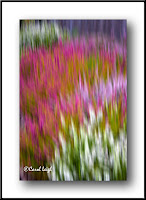 This past week has been devoted not to shooting but rather to backing up photos as well as processing macro images for my upcoming macro class in Castro Valley. During my photo backup, last week's farmers' market photos caught my eye, so I thought I'd quickly process a few more of the shots I took. I had limited myself to a 50mm lens and an aperture of f/1.8 for minimal depth of field. Using just one lens (especially one that doesn't zoom) is good practice. I find it forces me to look a little closer and to use my feet to change the composition rather than relying on zooming in and out.
This past week has been devoted not to shooting but rather to backing up photos as well as processing macro images for my upcoming macro class in Castro Valley. During my photo backup, last week's farmers' market photos caught my eye, so I thought I'd quickly process a few more of the shots I took. I had limited myself to a 50mm lens and an aperture of f/1.8 for minimal depth of field. Using just one lens (especially one that doesn't zoom) is good practice. I find it forces me to look a little closer and to use my feet to change the composition rather than relying on zooming in and out.Quite often this is the way I'll approach photographing at antique car shows. I'll walk the show with just one lens, let's say a 70-200mm lens. Then I'll put on a 24-85mm lens and walk the show again. And if I'm feeling totally insane, I'll then use a 10-17mm fisheye lens and walk the show yet again. Each lens we use forces us to see differently, to come up with different looks. And in photography, that's always a good thing. ©Carol Leigh

















































